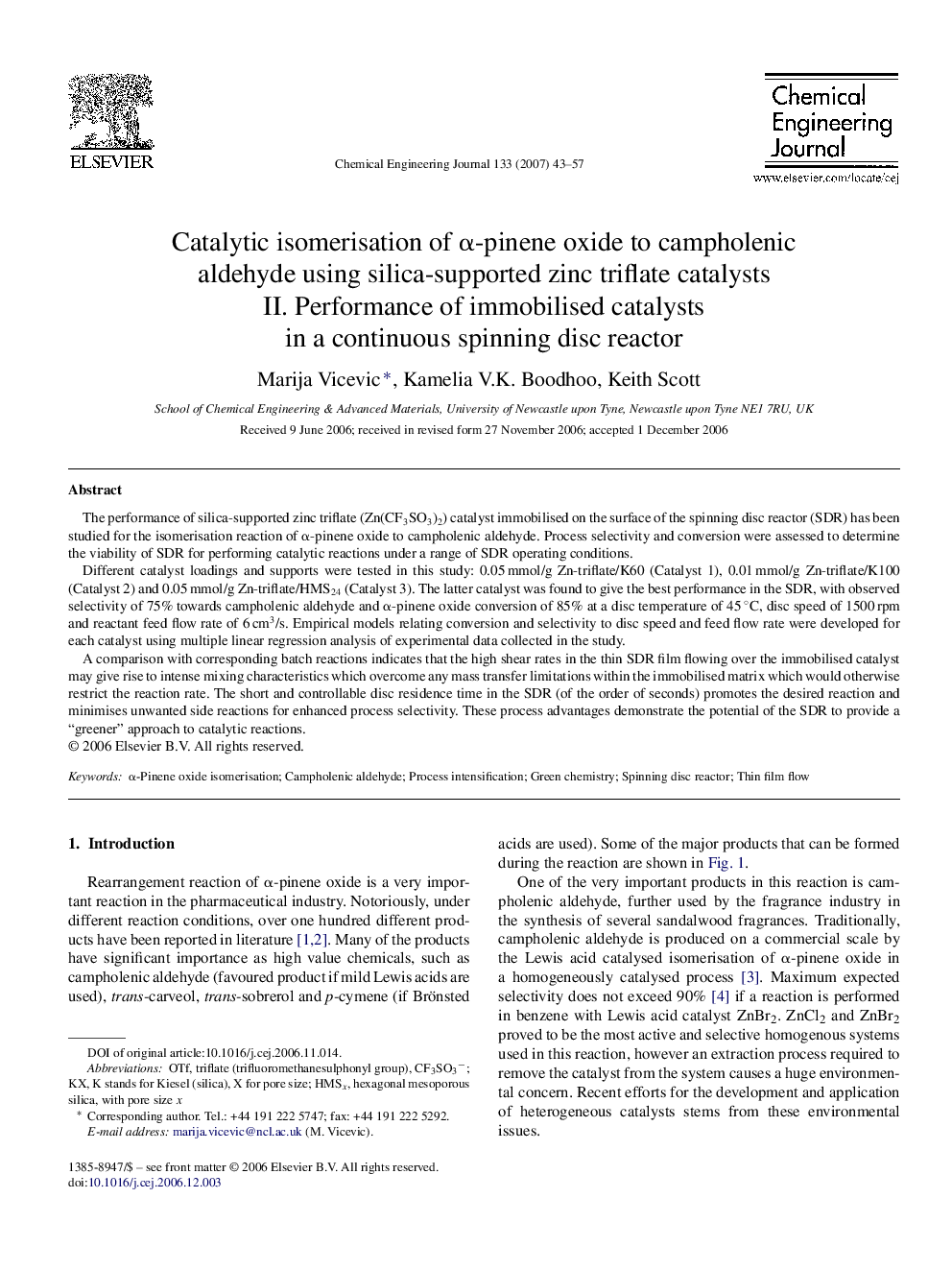| Article ID | Journal | Published Year | Pages | File Type |
|---|---|---|---|---|
| 153666 | Chemical Engineering Journal | 2007 | 15 Pages |
The performance of silica-supported zinc triflate (Zn(CF3SO3)2) catalyst immobilised on the surface of the spinning disc reactor (SDR) has been studied for the isomerisation reaction of α-pinene oxide to campholenic aldehyde. Process selectivity and conversion were assessed to determine the viability of SDR for performing catalytic reactions under a range of SDR operating conditions.Different catalyst loadings and supports were tested in this study: 0.05 mmol/g Zn-triflate/K60 (Catalyst 1), 0.01 mmol/g Zn-triflate/K100 (Catalyst 2) and 0.05 mmol/g Zn-triflate/HMS24 (Catalyst 3). The latter catalyst was found to give the best performance in the SDR, with observed selectivity of 75% towards campholenic aldehyde and α-pinene oxide conversion of 85% at a disc temperature of 45 °C, disc speed of 1500 rpm and reactant feed flow rate of 6 cm3/s. Empirical models relating conversion and selectivity to disc speed and feed flow rate were developed for each catalyst using multiple linear regression analysis of experimental data collected in the study.A comparison with corresponding batch reactions indicates that the high shear rates in the thin SDR film flowing over the immobilised catalyst may give rise to intense mixing characteristics which overcome any mass transfer limitations within the immobilised matrix which would otherwise restrict the reaction rate. The short and controllable disc residence time in the SDR (of the order of seconds) promotes the desired reaction and minimises unwanted side reactions for enhanced process selectivity. These process advantages demonstrate the potential of the SDR to provide a “greener” approach to catalytic reactions.
